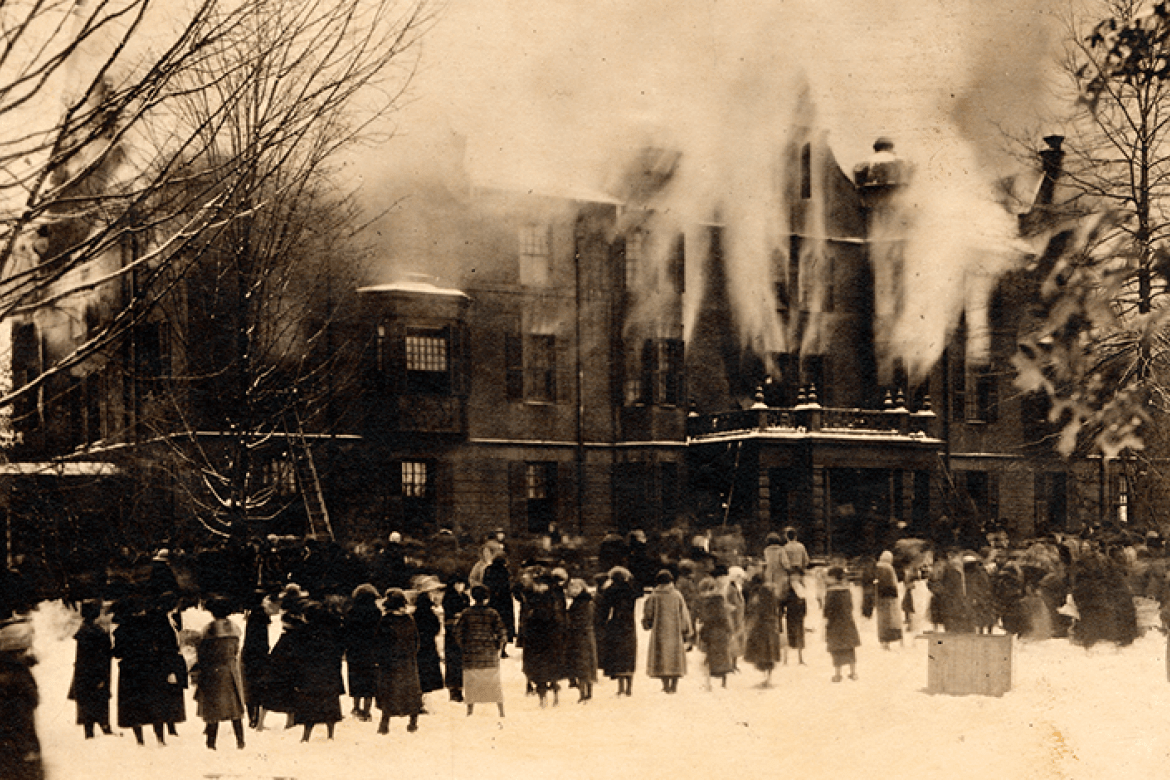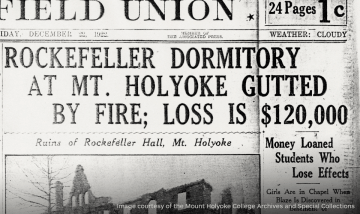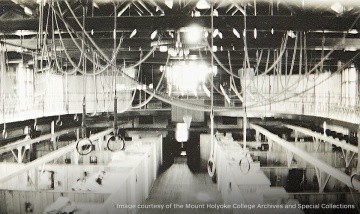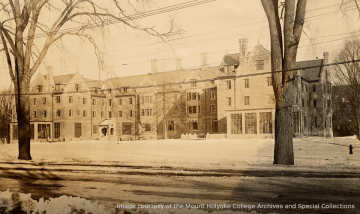Fire fuels philanthropy

North and South Rockefeller Halls, affectionately known as the “Rockies,” are among the most popular residence halls on campus. But the current halls actually represent the second version of the dormitory.

Unknown to many students, the current North and South Rockefeller Halls actually represent the second instance of a Rockefeller dormitory to exist on campus. On a chilly December morning in 1922, disaster struck Mount Holyoke when a fire broke out in Rockefeller Hall at 8:30 a.m. The blaze was out of control within an hour. Fires were not an uncommon occurrence on campus at the time — in 1896 the original Mount Holyoke Female Seminary Building was destroyed by fire and later, in 1917, Williston Hall was also consumed by flames.
On the day of this fire, school was still in session, with the Christmas recess due to start at noon the following day. Mary Hopkins, from the class of 1923, was packing a trunk in the basement when she discovered smoke and flames by the stairs of the kitchen wing. Flames rushed up the stairs to the kitchen, accelerated by an explosion of gas in the basement. Though local firefighters attempted to quell the flames and preserve the building, by the end of the day only the skeletal structure of Rockefeller Hall remained.

Soon after the fire, students left campus for the winter break. While they were away, the Blanchard Hall gymnasium was transformed into a makeshift residence hall. Rows of rooms were partitioned on either side of a central aisle. They all had doors, walls, curtains and beds. When school resumed on January 10th, students used sleds to carry their salvaged belongings from Skinner, where they had been stored, to the gymnasium.
Following the Rockefeller Hall fire, new procedures were put in place to prevent future fires. President Woolley announced that a high pressure pumping hydrant system would be installed on campus, connecting hydrants with water from Lower Lake. Additionally, the College would augment its student volunteer fire brigade with a new campus fire company staffed by employees. The last precautionary steps would be to remove all gas lights from the dormitory basements and to ensure that future dorms be built of concrete and steel in order to make them less flammable.
Though the fire was a devastating loss to the campus, it also highlighted the generosity of the Mount Holyoke community. On the morning of the fire, Trustees Edward N. White and Joseph A. Skinner had been part of the crowd who watched the struggle against the blazing inferno, and later handed out railroad tickets to students traveling home for the holidays, replacing those that had been lost to the flames. Students from other dormitories were quick to offer clothing and other items to their classmates.
While the loss of the dormitory was estimated to be around $120,000, it was projected that much more — likely between $250,000 and $300,000 — would be needed for a new building, and the College received just a little over $100,000 from insurance. Early in the new year, John D. Rockefeller, Jr. generously donated $175,000 to rebuild the residence hall, thus carrying on the legacy of his father, who had contributed $40,000 to build “Old Rocky” in 1897. Additional funds were raised by passionate alumnae through efforts spearheaded by Emily Driscoll and Evelyn Gibson, both members of the class of 1920, who formed a committee that aimed to collect $10 gifts from each of the 2,000 residents who had ever lived in Rockefeller Hall.

Plans for the new building were drawn up within a month following the fire. Allen Cox, the architect whose Hillside dormitory (now called North and South Mandelle Halls) was already under construction, was selected to design the new building. The new residence hall, fondly called “Rocky Junior,” would go on to house 124 students, compared to the 90 who had previously lived in the destroyed dormitory.
Now, North and South Rockefeller Halls, affectionately known as the “Rockies,” are among the most popular residence halls on campus. Two separate halls that connect to form one majestic Tudor-style building, the Rockies’ large common rooms and sunrooms are host to many campus parties and events, making it an integral part of campus.
Images courtesy of the Mount Holyoke College Archives and Special Collections